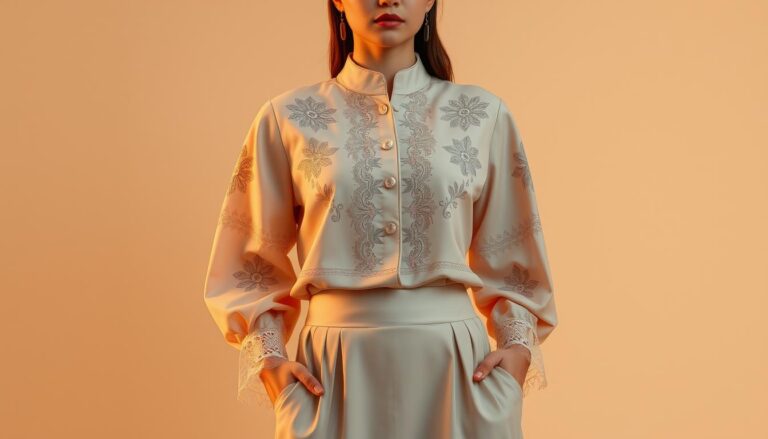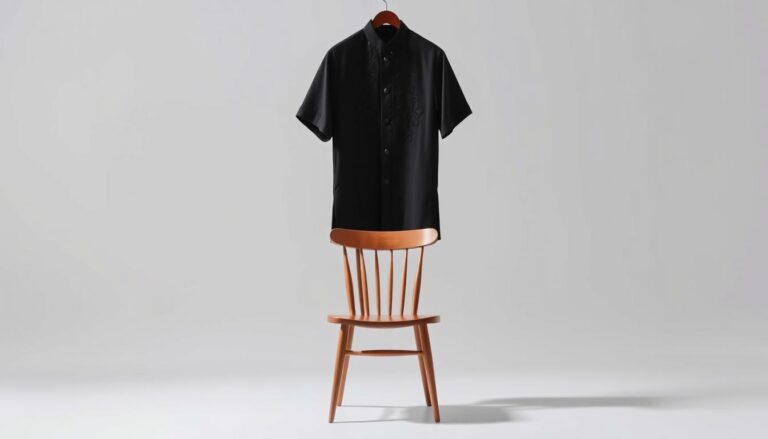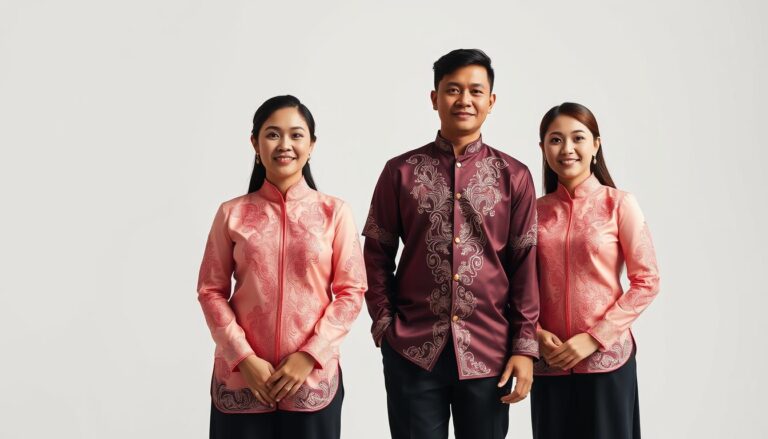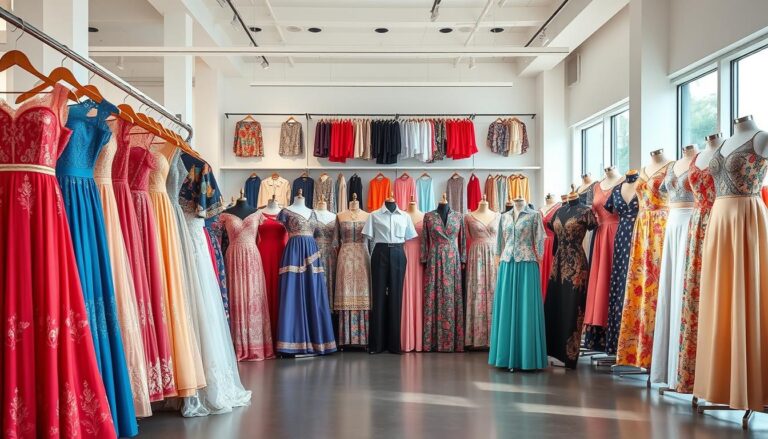The Significance of Barong in Religious & Political Events

Woven into the heart of Filipino heritage, the Barong Tagalog stands as more than just clothing. This sheer, embroidered garment carries centuries of history, blending indigenous craftsmanship with colonial influences. Originally called baro, it evolved from simple woven fibers to a symbol of resistance during Spanish rule.
Today, this attire remains central to formal occasions. Delicate fabrics like piña (pineapple fiber) and jusi (silk blend) define its lightweight elegance. Intricate floral or geometric embroidery often adorns the chest, showcasing regional artistry. From weddings to presidential inaugurations, its presence marks cultural pride and political unity.
Modern designers reimagine traditional designs without losing their essence. Slimmer cuts and bolder patterns appeal to younger generations, while still honoring craftsmanship. Whether worn at religious festivals or international summits, the barong bridges past and present.
Key Takeaways
- Barong Tagalog is the Philippines’ national dress, representing cultural identity.
- Sheer fabrics like piña and jusi signal status and craftsmanship.
- Worn at major events, from religious ceremonies to political gatherings.
- Historical roots trace back to pre-colonial and Spanish colonial eras.
- Contemporary styles keep the tradition alive in modern fashion.
Historical Roots and Cultural Evolution
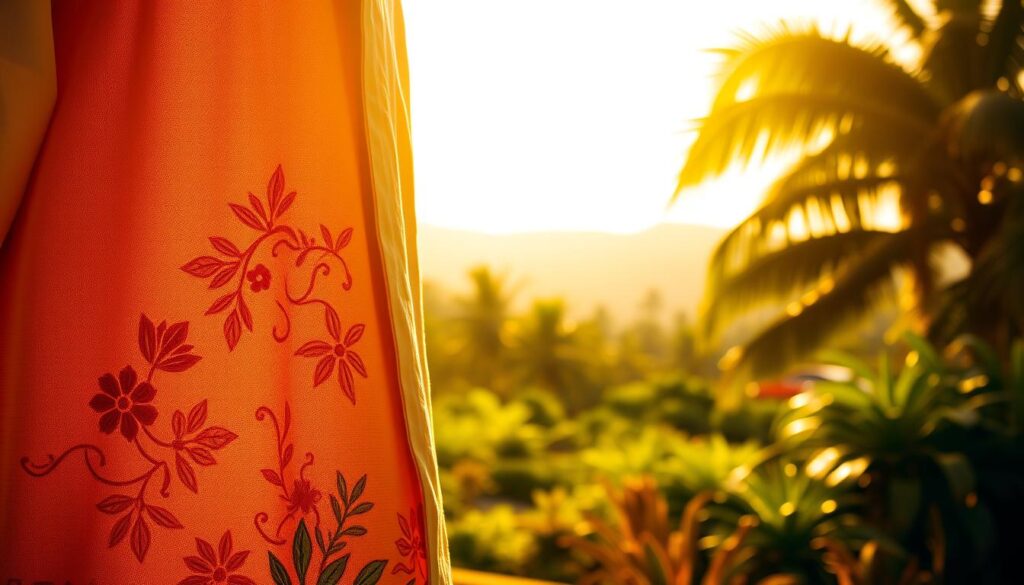
Long before colonial rule, early Filipinos wore the baro—a collarless shirt crafted from woven fibers. Designed for tropical heat, this loose garment allowed airflow while reflecting social status through earthy dyes. Indigenous communities used materials like abacá and cotton, with patterns varying across islands.
Indigenous Foundations and Pre-Colonial Attire
The original baro prioritized function over form. Its untucked design suited farming and fishing, while colors distinguished village leaders from commoners. Trade with neighboring cultures introduced new weaving techniques, but the shirt remained minimalist—a canvas for regional identity.
Spanish Colonial Influence and the Birth of the Modern Barong
Spanish colonizers reshaped local clothing in the 16th century. Laws required Filipinos to wear transparent piña fabric, making laborers’ undershirts visible—a class marker. Wealthy families countered by adding intricate embroidery to their barong tagalog, transforming it into a status symbol.
| Era | Materials | Design Features | Social Impact |
|---|---|---|---|
| Pre-Colonial | Abacá, Cotton | Collarless, earth tones | Class distinctions through color |
| Spanish Colonial | Piña, Jusi | Embroidery, lace accents | Elite resistance through craftsmanship |
By the 19th century, tailors blended European jusi silk with native patterns. Slimmer cuts emerged, yet the shirt’s airy structure endured. This fusion birthed a garment that quietly defied colonial rule while anchoring Filipino identity.
The Significance of Barong in Religious & Political Events
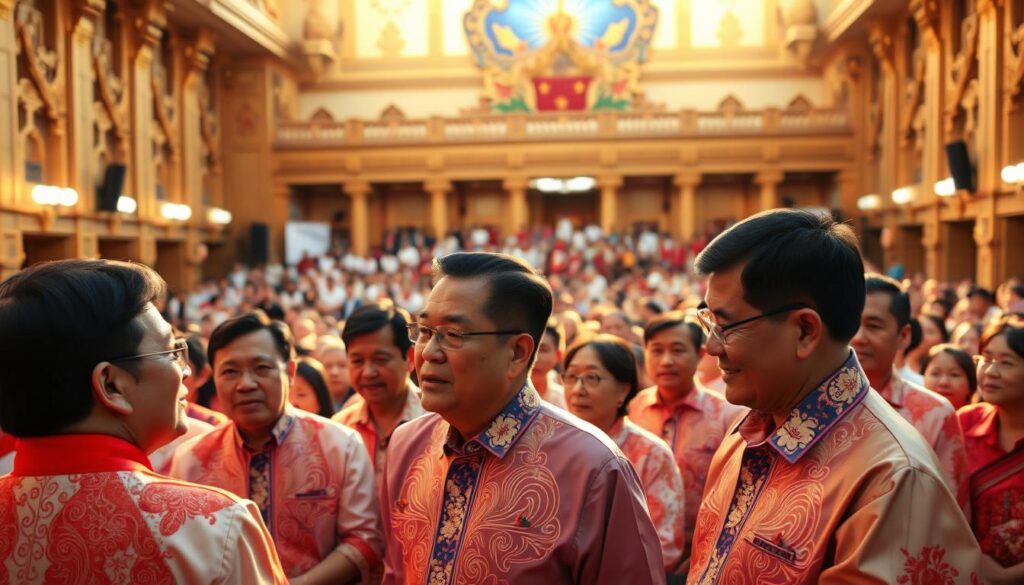
More than just fabric, the barong tagalog shapes national narratives. Presidents Manuel Quezon and Ramon Magsaysay made it their uniform during pivotal moments, transforming the shirt into a political manifesto. At state dinners and treaty signings, its delicate embroidery whispers Filipino resilience.
Political Symbolism and National Identity
World leaders like Bill Clinton donned this attire during the 1996 APEC summit, recognizing its diplomatic weight. Ferdinand Marcos standardized intricate all-over embroidery patterns, merging authority with artistry. Modern presidents still choose barongs for inaugurations, proving its enduring role as a cultural unifier.
Sacred Stitches in Civic Life
Religious festivals feature barongs alongside traditional terno dresses. During processions honoring Santo Niño or Our Lady of Peñafrancia, the shirt bridges spiritual devotion and civic pride. Its lightweight materials like piña suit both sweltering church services and formal state events.
| Event Type | Barong Features | Symbolic Meaning |
|---|---|---|
| Presidential Inaugurations | Full embroidery | National unity |
| Religious Festivals | Subtle floral patterns | Cultural continuity |
| Diplomatic Summits | Modern slim cuts | Global Filipino identity |
From Marcos-era politics to modern street processions, this attire adapts while maintaining core symbolism. Its evolution mirrors how Filipinos balance tradition with progress—one stitch at a time.
Material and Craftsmanship: The Fabrics Behind Tradition
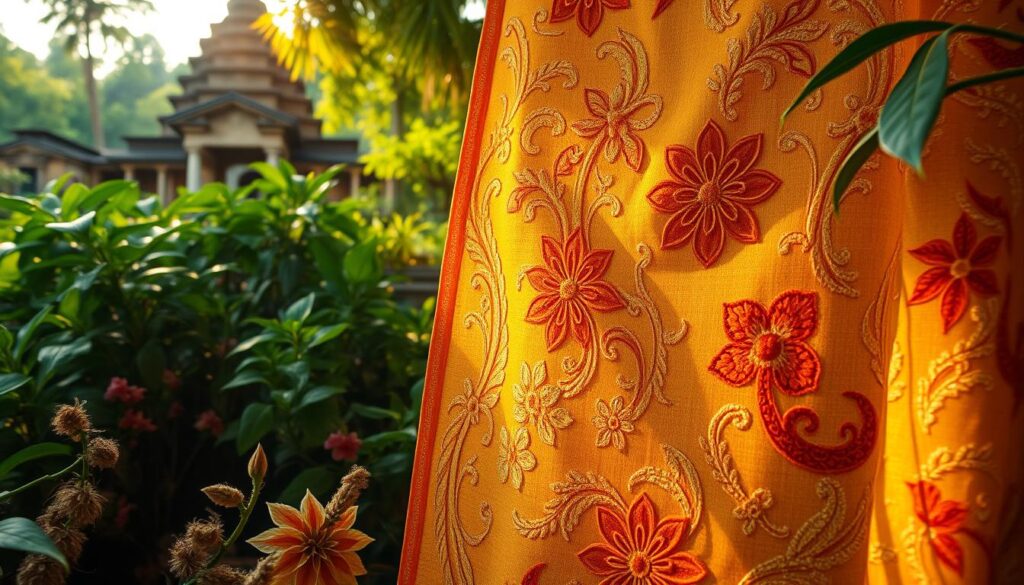
Crafting a barong tagalog begins with selecting threads steeped in history. Traditional textiles showcase Filipino ingenuity, blending natural resources with meticulous artistry. Modern innovations now expand possibilities while respecting ancestral techniques.
Traditional Textiles: Piña, Jusi, and Abacá
Piña, woven from pineapple leaves, remains the gold standard. Artisans extract fibers through a weeks-long process called panuga, then hand-weave them into translucent cloth. Colonial-era jusi blended silk with plant fibers for durability, while abacá (banana fiber) provided early versions of the baro with earthy textures.
Embroidery techniques like calado transform these fabrics. Needleworkers create lace-like patterns by pulling threads apart, not cutting them. This method preserves structural integrity while adding delicate details—a metaphor for cultural resilience.
Modern Materials and Production Techniques
Contemporary designers use organza and jusilyn to mimic traditional looks at lower costs. These machine-made fabrics allow bolder cuts and experimental designs. Laser-cutting technology now replicates hand-embroidered patterns in minutes.
Yet heritage persists. Many workshops still hand-finish collars and cuffs, ensuring each barong carries human touch. As one tailor notes: “We honor the past by stitching it into the present.”
| Fabric Type | Production Method | Key Features | Use Cases |
|---|---|---|---|
| Piña | Hand-woven | Breathable, luminous | Weddings, state events |
| Jusilyn | Machine-loomed | Wrinkle-resistant | Daily office wear |
| Abacá | Hand-stripped | Textured, durable | Cultural reenactments |
From pineapple fields to fashion runways, these materials tell a story of adaptation. They prove tradition isn’t static—it’s a fabric constantly being rewoven.
Evolution in Fashion: From Heritage to Contemporary Style

Filipino designers are rewriting style rules by merging ancestral motifs with urban edge. Brands like Illa Manila now pair barong tagalog silhouettes with denim jackets, while streetwear labels layer them over graphic tees. This shift attracts Gen Z crowds who crave cultural relevance without sacrificing comfort.
Adaptations in Modern Attire and Streetwear Innovations
Traditional piña and jusi fabrics share racks with machine-woven alternatives like polyester blends. Designers shorten hemlines for casual wear and add hidden pockets—features absent in ceremonial barongs. Women’s versions feature cropped cuts and off-shoulder designs, expanding beyond the classic men’s shirt.
| Design Elements | Traditional | Modern |
|---|---|---|
| Embroidery | Hand-stitched florals | Laser-cut geometrics |
| Fabrics | Piña, abacá | Jusilyn, organza |
| Audience | Ruling class, elders | Youth, global Filipinos |
Social media fuels this revival. Influencers pair embroidered barong tagalog with sneakers, proving heritage attire fits skate parks as well as ballrooms. Brands like Kultura use Instagram drops to sell limited-edition pieces, blending culture with commerce.
Despite modern twists, artisans preserve core techniques. As designer Lulu Tan-Gan states: “We’re not erasing history—we’re adding new chapters.” Machine embroidery mimics handwork, making intricate patterns affordable. Two-tone materials honor regional weaving traditions while appealing to minimalist tastes.
This evolution sparks debates. Purists argue simplified designs dilute status symbols once used to distinguish ruling elites. Yet most celebrate how streetwear innovations let people wear barong daily—transforming it from museum piece to living fashion.
Barong as a Symbol of Filipino Pride and Identity
When President Ramon Magsaysay stepped into office wearing barong tagalog in 1953, he ignited a cultural revolution. This gesture transformed the garment into a defiant emblem of post-colonial identity. Decades later, Ferdinand Marcos formalized its status by declaring it the official national attire in 1975.
Role in National Celebrations and Official Functions
State events showcase the barong’s unifying power. Male politicians and diplomats consistently choose it for inaugurations, treaty signings, and international summits. Delicate piña fabrics and hand-stitched floral patterns signal both elegance and ancestral respect.
| Event Category | Design Details | Cultural Message |
|---|---|---|
| Presidential Oaths | Full-body embroidery | Sovereignty |
| Independence Day | Red-white-blue accents | Patriotism |
| Global Conferences | Slim-fit jusi silk | Modern Filipinism |
Beyond politics, the attire stars in festivals like Sinulog and Pahiyas. Men pair it with denim for street parades or wear luxe versions during Lunar New Year. Artisans preserve techniques like calado embroidery, ensuring each piece remains a wearable heirloom.
Today’s designers balance tradition with innovation. Machine-woven jusilyn fabrics make daily wear practical, while youth-driven brands add snap buttons and shorter hems. Yet whether worn at Malacañang Palace or a neighborhood fiesta, the barong tagalog continues stitching Filipinos to their shared story.
Preserving Cultural Heritage Through Attire
Schools across the Philippines now weave barong tagalog into cultural education. Students wear embroidered versions during “Linggo ng Wika” (Language Week), pairing lessons on piña weaving with folk dances. This hands-on approach transforms the garment from a relic to a living classroom tool.
Educational and Civic Importance of Wearing the Barong
Universities host design competitions challenging youth to reinterpret traditional barongs using sustainable materials. One winning entry combined pineapple fiber with recycled plastic—a nod to both heritage and eco-consciousness. These initiatives spark curiosity about ancestral craftsmanship while addressing modern concerns.
Civic groups organize community embroidery workshops where elders teach calado stitching. Participants create collaborative pieces displayed at town fiestas, reinforcing shared identity. As one organizer notes: “Every thread connects us to farmers who grew the abacá, artists who drew the patterns.”
- Cultural continuity: Government offices mandate barong tagalog every Friday, normalizing its presence in daily life
- Youth engagement: TikTok campaigns showcase teens styling vintage barongs with sneakers, reaching 2M+ views
- Craft preservation: NGOs fund apprenticeships in endangered skills like jusi loom operation
During independence day parades, entire families coordinate outfits—parents in classic piña, children in machine-embroidered cotton. This visual unity turns streets into open-air museums, celebrating how Filipino identity evolves while staying rooted.
Conclusion
From colonial-era baro to modern runways, this iconic attire embodies Filipino resilience. What began as humble woven clothing now stands tall as a symbol of national pride, blending ancestral techniques with contemporary fashion.
Traditional materials like pineapple fiber and silk still define luxury pieces, while machine-made fabrics expand accessibility. Presidents and citizens alike choose barong tagalog for inaugurations and festivals, proving its power to unite through culture.
Designers like Pierre Cardin reimagined classic designs with bolder cuts, showing how heritage adapts without fading. Streetwear versions paired with denim attract younger crowds, turning ceremonial garb into everyday clothing.
Every stitch tells a story—whether hand-embroidered florals or laser-cut patterns. As global interest grows, wearing barong becomes both personal identity and collective celebration. Let’s honor this living art by keeping it central to events big and small.

